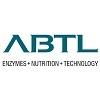Explore all the information on
Poultry management
Poultry management usually refers to the husbandry practices or production techniques that help to maximize the efficiency of production. Sound management practices are very essential to optimize production. Scientific poultry management aims at maximizing returns with minimum investment. A carefully controlled environment that avoids crowding, chilling, overheating, or frightening is almost universal in poultry farming. Cannibalism, which expresses itself as toe picking, feather picking, and tail picking, is controlled by debeaking at one day of age and by other management practices. The feeding, watering, egg gathering, and cleaning operations are highly mechanized. Birds are usually housed in wire cages with two or three animals per cage, depending on the species and breed, and three or four tiers of cages superposed to save space. Cages for egg-laying birds have been found to increase production, lower mortality, reduce cannibalism, lower feeding requirements, reduce diseases and parasites, improve culling, and reduce both space and labour requirements.
Dr. Rakesh Nimbalkar a consultant & nutritionist in Animal Nutrition tackles key challenges in India's poultry industry, including pesticide contamination and viral diseases. He focuses on replacing antibiotics with essential oils and adapting feed formulations using more digestible corn by-products as the market shifts toward sustainable, antibiotic-free production....
Comments : 0
Recommendations: 0
Mr. Amit Saraogi - Co-Founder & Managing Director of Anmol Feeds Pvt. Ltd. & Founder of PrraniGanga, empowering farmers with an accessible one stop solution platform. He highlights the challenges in the poultry industry & the role of innovation to drive the industry forward. ...
Comments : 0
Recommendations: 2
Mr Ravindran Marimuthu, Senior Technical Manager at Hy-Line India, shares his expertise in advancing Hy-Line’s impact in India’s poultry sector. Dr. Ravindran discusses how Hy-Line’s birds are driving growth and innovation in India....
Comments : 0
Recommendations: 0
Mr. Ranpal Singh Dhanda, Owner of Unnat Feeds and President of the Poultry Federation of India, highlights the immense growth potential in India's poultry sector. He discusses the rising awareness of protein consumption and the role of chicken and eggs as affordable, widely accepted protein sources. ...
Comments : 0
Recommendations: 1
Mr. Bahadur Ali, Founder & Managing Director of IB Group, shares his vision for the future of the poultry industry in India. He discusses how India's protein deficit and the growing demand for affordable, easily accessible protein from chicken and eggs are driving the industry's growth....
Comments : 0
Recommendations: 2
I. INTRODUCTION Severe feather pecking (SFP) is an abnormal behaviour which reduces both hen welfare and the efficiency of egg production. While the specific causes are unknown, it is acknowledged to be multifactorial, complex and unpredictable (Rodenburg et al., 2013; Hartcher et al., 2016). The problem is compounded because the behaviour seems to spread rapidly via social learning (Zeltner et al., 2000) and is therefore difficult to control in large groups of hens. A reliable...
Comments : 0
Recommendations: 0
Flock uniformity is crucial to increase the performance and profitability of commercial egg production (Corzo et.al, 2004). Obtaining flock uniformity in a free-range system may be challenging due to the variation in feeding and ranging behaviour of individual birds. The current study investigated the effect of body weight on initial range utilization and flock uniformity in two free-range laying flocks. A total of 6,250 Lohmann Brown hens were weighed and assigned to 2 identical...
Comments : 0
Recommendations: 0
I have 4700 layer birds of 30 weeks there are daily 5 to 6 mortality occur due to vent picking in laying time any one who treat this problem, thanks. ...
Comments : 7
Recommendations: 0


Effective Solutions to Manage Poultry Heat Stress for Better Health and Farm Productivity
Suggested link
Drinking behavior in poultry develops within the first couple days of life. When an open water source is provided, birds stick their beak roughly 10 mm into the water, use a scooping motion to collect water in their beak, extend...
Comments : 8
Recommendations: 1
Please join us for our PEC fall symposium on Sustainable Agriculture & Poultry Welfare!
When: Nov 14, 9 AM US Eastern
Register for free here: ...
Comments : 0
Recommendations: 0
Dr. Christiane Keppler, Landesbetrieb Landwirtschaft Hessen (LLH - Hesse State Framing Authority)
As in previous years, poultry farmers are currently facing a number of challenges. These include, in particular, a further...
Comments : 0
Recommendations: 0
Mobile slaughtering and direct farm sales –in Hall 26 – Lectures from science and industry – EuroTier 2024: 12 to 15 November in Hanover, Germany– World's leading trade fair for animal farming and livestock management – More than 2,100 registered exhibitors from 52...
Comments : 0
Recommendations: 0
Zeshan Zulfiqar*, Muhammad Khalid Bashir, Shahid Ur Rehman, Umar Farooq, Muhammad Farooq Khalid, Muhammad Arslan, Rahat Mobeen Department of Poultry Science, UAF Sub-campus Toba Tek Singh, Pakistan Institute of Animal and Dairy Sciences, Faculty of Animal Husbandry, University of Agriculture Faisalabad Abstract Food security is defined as “Ensuring that all members of a household has adequate diet in access for normal life”. Both of its elements e.g. food...
Comments : 0
Recommendations: 0
Suresh Chitturi (Managing Director, Srinivasa Farms) comments on India’s main strengths, consumer trends, and the evolution of poultry operations in the country, during this Engormix interview....
Comments : 0
Recommendations: 3
Poultry growers are invited to attend the 2025 International Production & Processing Expo (IPPE) for a special onsite registration fee of only $5, offering a fantastic savings of $130! This program is open to U.S. residents only.
“We highly...
Comments : 0
Recommendations: 0
In a negative pressure-ventilated poultry house, the amount of air entering through each side wall inlet depends primarily on the level of negative pressure generated by the house exhaust fans, the size of the inlet opening, and the air inlet design. The higher the static pressure, the faster the air will enter the house and...
Comments : 0
Recommendations: 0
It is well known that the higher the static pressure, the faster the air will enter through an air inlet and therefore the greater the amount of air which will enter through the inlet. But how precisely does velocity change with pressure and similarly how does the amount of air entering through an inlet change with static pressure? To answer these questions, the performance of typical 44" X 7" (42.75" X 5.75" actual opening) and 44" X 14" (42" X 10.75" actual opening) galvanized door inlets...
Comments : 0
Recommendations: 0
When building a new house or retrofitting an older one, tunnel fan selection is one of the most, if not the most important decision a producer has to make. A house’s fans are essentially the engine of the ventilation system and as a result have a significant effect on a producer’s ability to maintain the proper environmental conditions throughout the year. Furthermore, with rising electricity prices, selecting the right energy-efficient fan can save a producer thousands of...
Comments : 0
Recommendations: 1
Though it may not seem like it, each one-foot section of a five-foot-tall, six-inch pad has a tremendous surface area... well over 300 square feet. As a result, a house with two 70' X 5' evaporative pad systems has over 42,000 square feet of pad surface area from which water can evaporate and cool the incoming air. When we look at a 70' X 5' pad system, we can only see the 350 square feet of surface area, not the over 21,000 square feet of (60 times) interior pad surface...
Comments : 0
Recommendations: 0
A 54" tunnel fan with a 1.5-hp motor is running and consuming 1,700 watts of power. The belt suddenly breaks and the fan blades stop rotating, but the motor continues to spin. How much power do you believe the motor is now consuming? 1,700 watts? It is important to understand that the primary factor determining how much power a fan will use is how fast the motor is spinning the prop. The faster the prop spins, the greater the amount of work required, and the greater the amount of power used...
Comments : 0
Recommendations: 0



.jpg&w=3840&q=75)






_1.jpg&w=3840&q=75)


















